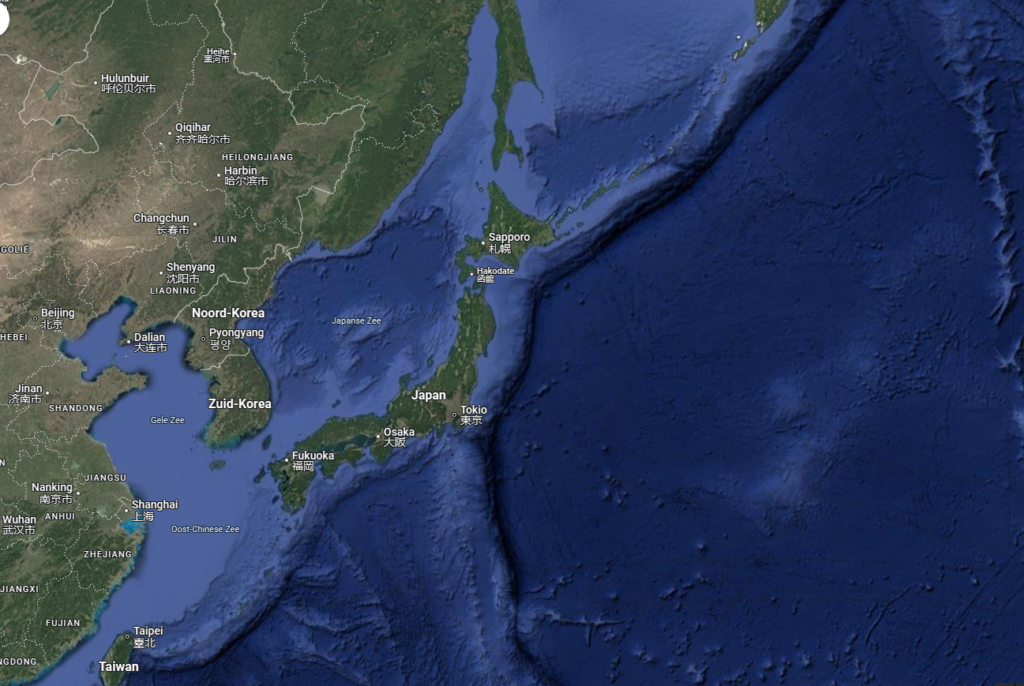Japan, an island nation in East Asia, is famous for its diverse landscapes, mountainous terrain, and breathtaking natural beauty. Located in the Pacific Ocean, Japan consists of four main islands—Honshu, Hokkaido, Kyushu, and Shikoku—along with nearly 7,000 smaller islands. Covering approximately 377,975 square kilometers, Japan’s geography is shaped by active volcanoes, dense forests, and stunning coastlines.

With around 73% of its land covered by mountains, Japan is home to several iconic peaks, including Mount Fuji (3,776 meters), the country’s tallest and most famous volcano. The island nation is also part of the Pacific Ring of Fire, making it prone to earthquakes and hot springs (onsen), which attract millions of visitors every year. Japan’s coastline stretches for over 29,000 kilometers, offering stunning ocean views, picturesque fishing villages, and bustling port cities.
Japan experiences four distinct seasons, with cherry blossoms in spring, hot summers, vibrant autumn foliage, and snowy winters. The country’s climate ranges from the subarctic conditions of Hokkaido to the subtropical warmth of Okinawa, making it a diverse destination for travelers.
Japan’s 47 Prefectures: A Region-by-Region Guide
Japan is divided into 47 prefectures, each offering unique landscapes, cultural traditions, and must-visit attractions. These are grouped into eight major regions, making it easier for travelers to explore the country.

1. Hokkaido – The Northern Wonderland
Hokkaido is Japan’s largest and northernmost island, known for its winter sports, hot springs, and untouched nature. Famous spots include Sapporo, the stunning lavender fields of Furano, and Shiretoko National Park. The island’s cool climate makes it perfect for skiing and snowboarding in Niseko and Asahikawa.
2. Tohoku – A Land of Nature and Traditions
Located in the northeast of Honshu, Tohoku is known for its rural landscapes, hot springs, and historical samurai towns. Popular destinations include Aomori’s Nebuta Festival, the scenic Oirase Gorge, and the ancient temples of Hiraizumi.
3. Kanto – The Heart of Modern Japan
Kanto is home to Tokyo, the capital city, along with other major cities like Yokohama, Chiba, and Saitama. This region is the economic and cultural hub of Japan, offering everything from high-tech districts in Akihabara to the historic temples of Nikko.
4. Chubu – Home to Mount Fuji and the Japanese Alps
Chubu, located in central Japan, is famous for Mount Fuji, the Japanese Alps, and beautiful coastal towns. The region includes Nagano’s ski resorts, the historic village of Shirakawa-go, and Kanazawa’s samurai heritage.
5. Kansai – The Cultural Heart of Japan
Kansai is the historical and cultural center of Japan, featuring world-famous sites such as Kyoto’s golden Kinkaku-ji Temple, Osaka’s vibrant nightlife, and Nara’s sacred deer park. It is also home to Kobe’s scenic harbor and Wakayama’s ancient temples.
6. Chugoku – A Region of History and Natural Wonders
Chugoku is known for Hiroshima’s Peace Memorial Park, the floating torii gate of Miyajima, and the scenic San’in coastline. This region offers a mix of history, stunning landscapes, and relaxing hot springs.
7. Shikoku – Japan’s Spiritual Island
Shikoku is best known for the 88 Temple Pilgrimage, a sacred Buddhist journey across the island. It also features beautiful coastline views in Tokushima, traditional villages in Kochi, and historic castles in Matsuyama.
8. Kyushu & Okinawa – A Tropical Paradise with Volcanic Beauty
Kyushu is home to volcanic landscapes, hot springs, and vibrant cities like Fukuoka, Nagasaki, and Kumamoto. Meanwhile, Okinawa boasts pristine beaches, a unique Ryukyu culture, and world-class diving spots, making it a tropical getaway.
Why Explore Japan’s Prefectures?
Each of Japan’s 47 prefectures offers a unique travel experience, from the neon lights of Tokyo to the historic streets of Kyoto, the snowy mountains of Hokkaido, and the tropical beauty of Okinawa. Whether you’re interested in history, nature, food, or adventure, Japan’s diverse geography ensures something for every traveler.
Plan your journey and discover the best places to visit in Japan—a land where ancient traditions meet modern innovation, and every region tells a different story.